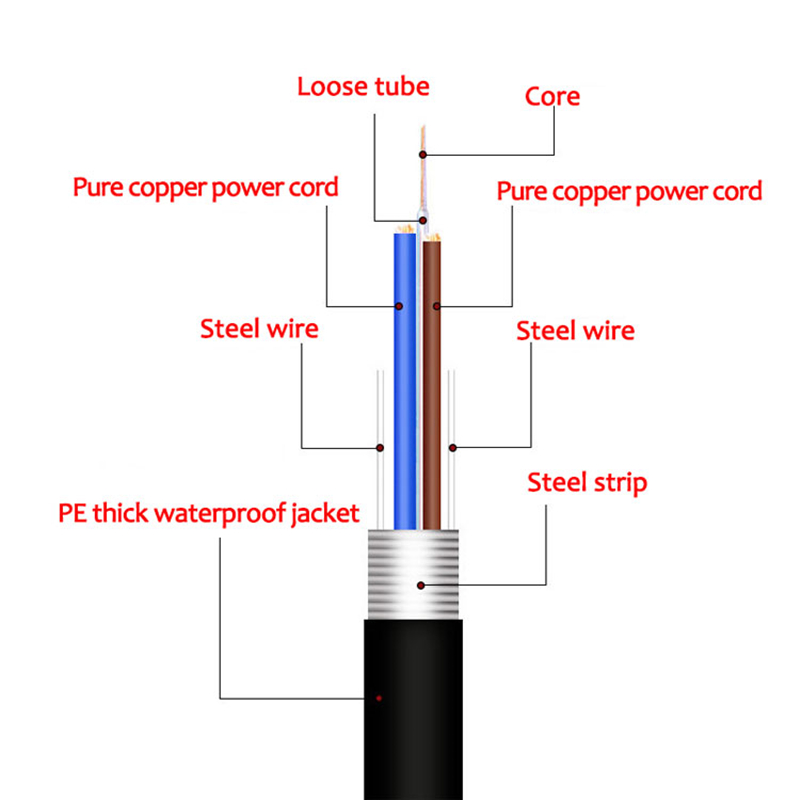Introduction
The
structure of opts-electric hybrid cable is to insert a 250μm fiber into a loose
tube made of high-modulus material, and the loose tube is filled with a
waterproof compound. The center of the cable core is FRP or metal reinforcement
(some structures require a layer of PE underlay on the reinforcement). The wire
and the loose tube (and the filling rope) are twisted around the central
reinforcing core into a compact and round core, and the gap in the core is
filled with a water blocking filler. The double-coated plastic strip (PSP) is longitudinally
extruded and extruded into a polyethylene or low-smoke halogen-free (LSZH)
jacket.
Features
-
Has good flexibility and mechanical properties.
-
Photoelectric integration, fully saving pipeline resources.
-
The cable section and the cable section maintain a relatively independent
structure for easy introduction, extraction and connection during installation.
-
Consolidate
multiple power lines, telephone lines, TV lines, network lines, monitoring
lines, data lines, etc., saving costs.
-
Large operating temperature range.
-
Large construction temperature range.
-
The diameter of the cable and the bending radius are small, and the
colleague-compatible optical signal transmission and power transmission can be
freely installed in a small space.
Technical advantages
Optimize transmission line design and save energy.
Photoelectric integration, transmitting information while transmitting
electrical energy, and can detect the working state of the line.
The optical fiber is compounded in the wire to prevent fiber breakage and fiber
breakage caused by lightning on the ground.
It will not cause electric cable corrosion or cable breakage or fiber breakage
caused by field strength.
There is no hidden danger caused by adding extra line load to the original
route.
Structural
parameters
|
Project
|
Skills
requirement
|
Remarks
|
|
Allowable
bending radius (mm)
|
Dynamic
|
30D
|
|
|
|
Static
|
20D
|
|
|
Allowable
tension (N)
|
Short
term
|
3000
|
|
|
|
Long
term
|
1500
|
|
|
Allowable
crushing force
(N/100mm2)
|
Short
term
|
3000
|
|
|
|
Long
term
|
1000
|
|
|
Range
of working temperature
|
Wire
|
-15℃~+70℃
|
Comply
with GB5023-1997
|
|
|
Other
materials than wires
|
-40℃~+70℃
|
|
|
Water
blocking / waterproof performance
|
Long-term
immersion in water does not seep
|
Except
for the inner conductor of the wire
|
|
|
|
No
leakage
|
|
Construction
temperature range
|
-20℃~+60℃
|
Except
for wires
|
|
|
0℃~+60℃
|
Wires
|
|
Weight
|
347kg/km (RV-2*2.5mm)
382kg/km (RV-4*2.5mm)
502kg/km (RV-6*2.5mm)
628kg/km (RV-8*2.5mm)
|
|
|
Mechanical
behavior
|
Cable
tensile, flattening, impact, repeated bending, torsion, winding, wear, etc.
meet YD/T901-2001 test requirements.
|
|
Applicable
laying method
|
Suitable
for laying pipes, channels, cable trenches, overhead, direct burial, etc.
|
